It’s been more than a decade since Paulo Nazareth first visited Art Basel Miami Beach, but his 2011 project, and the journey behind it, was a defining moment in the Brazilian artist’s practice. Banana Market / Art Market consisted of a green Volkswagen camper van with a mountain of bananas spilling out of the side door. It was a neat bit of commentary by Nazareth on the nature of art, its market and marketing, especially those making work in the global south. The choice of foodstuff contained a nod to the extractivist nature of economic and political relations between North and South America. (The former United Fruit Company is just one example of the political instability instigated by US brands south of the equator.) What was most remarkable however, was that Nazareth didn’t simply arrive by plane to present the work, but the installation was the culmination of a journey of several thousand kilometers on foot from his home state of Minas Gerais.
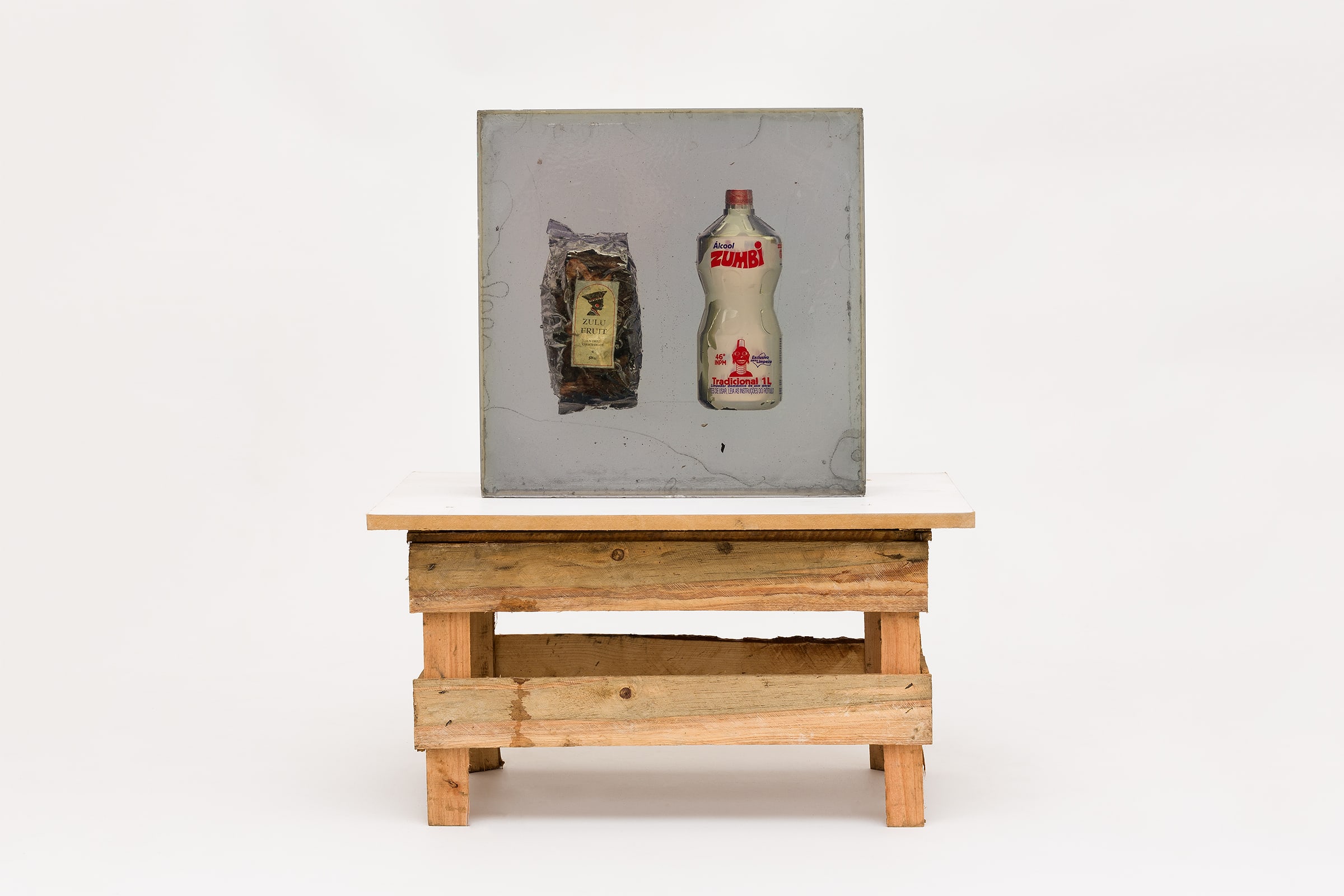
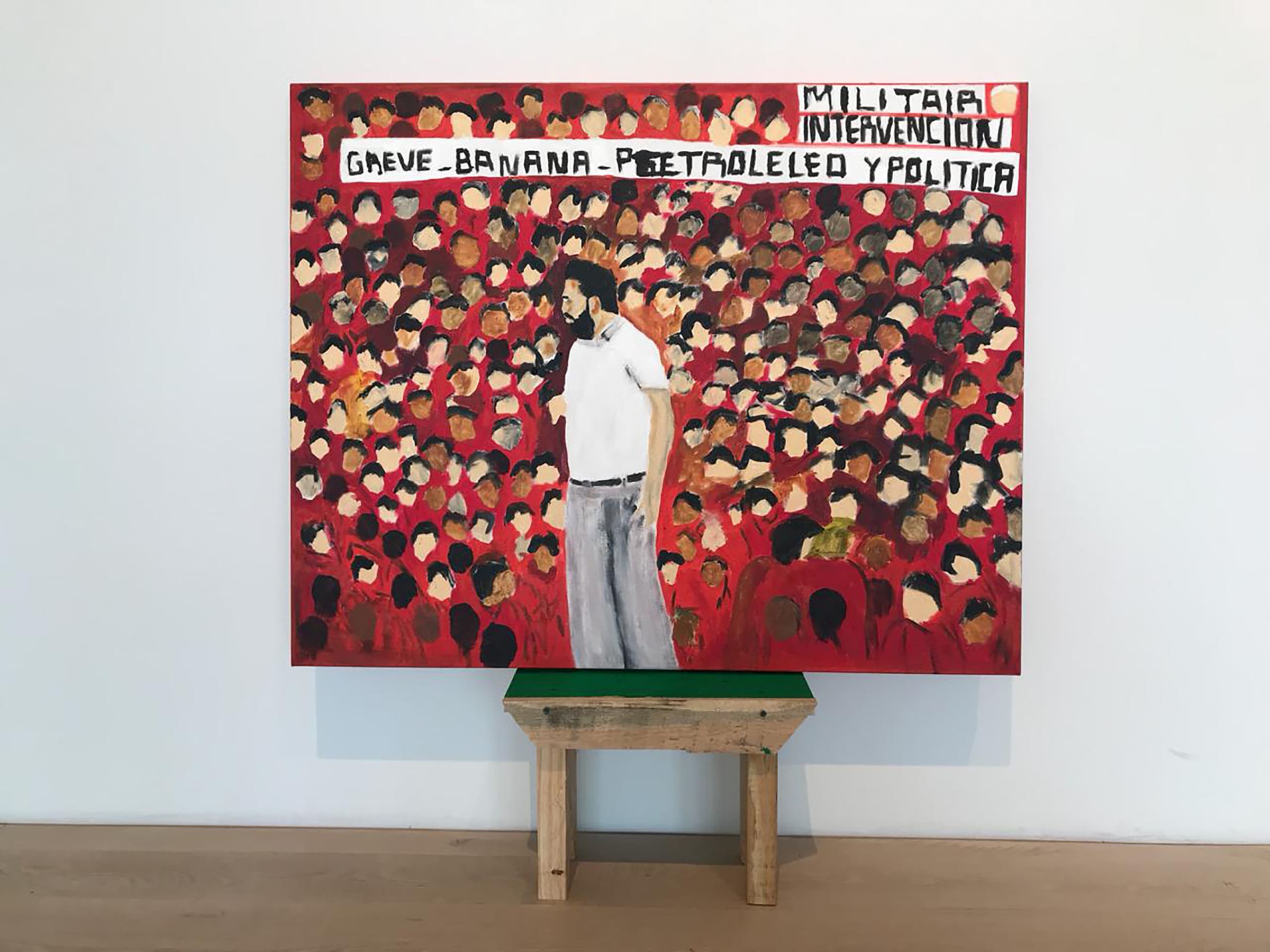
As the artist walk through a dozen countries, he collected objects, stories, and people along the way. These formed the basis for News from the Americas (2011–12), a series of floor arrangements (featuring bags, empty water bottles, even his cracked and dust-caked sandals) and self-portraits. One critic, writing about the artist at the start of his career, likened Nazareth to a catireiro: a person who lives off bartering to survive. In one of the photographs taken en route, the artist – who has mixed indigenous, Afrobrazilian, and European heritage – poses with the US flag visible behind him, holding a handwritten sign stating, ‘I clean your bath for fair price’; in another photograph, the blocky writing on scrap cardboard reads, ‘My exotic image for sale.’
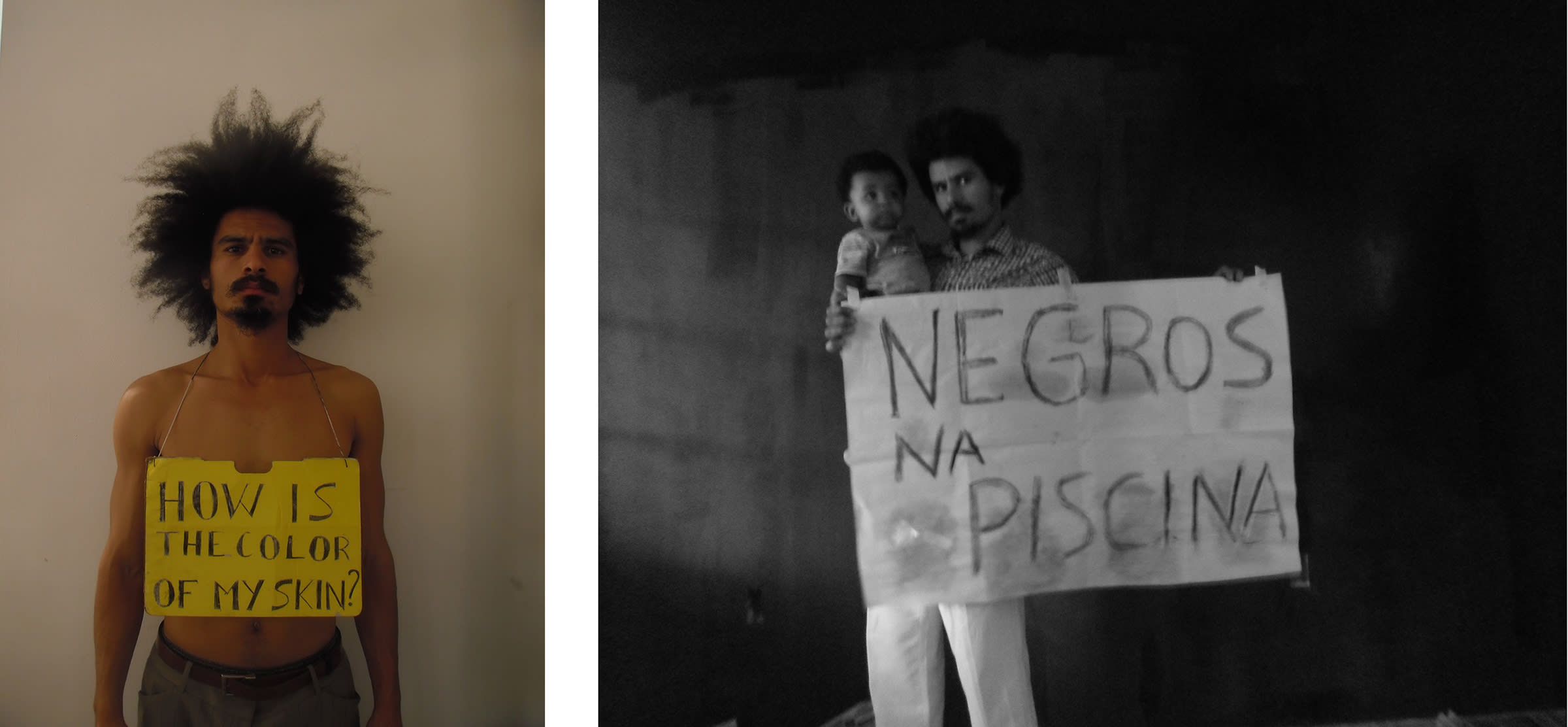
If these early projects were wryly satirical, then Nazareth’s recent work has become increasingly confrontational. Unable to travel during lockdown, the artist took to painting, producing ‘Caramuru’, a 2020 series of acrylic-on-canvas works depicting members of Brazil’s military police being shot by arrows. The paint handling has a naive style that belies the violence of the imagery, and the artist has said that the arrows represent a shot of hope against repression. Nazareth’s return to Art Basel in Miami Beach this year follows two major institutional shows at Pivo in São Paulo and at The Power Plant in Toronto. The Pivo retrospective, ‘Vuadora’, which included an impressive 180 works, was introduced by Products of Genocide (2017–), in which a series of well-known goods, with branding that appropriates some aspect of indigenous culture – packets of flour featuring dark-skinned people picking corn; a bag of mate powder with a similar image of exploited workers – are encased in resin blocks. The gesture could be read negatively or proactively: that they represent the death and destruction of Amerindian culture, or that Nazareth himself was entombing such imagery to history. For ‘Stroke’ at The Power Plant, Nazareth installed a small swimming pool surrounded by a series of manipulated documentary photographs from 1964, collectively titled White Ethnography (2022), retelling an incident in which Black anti-segregationist protesters jumped into a pool at a hotel in Florida, and the owner responded by pouring muriatic acid into the water.
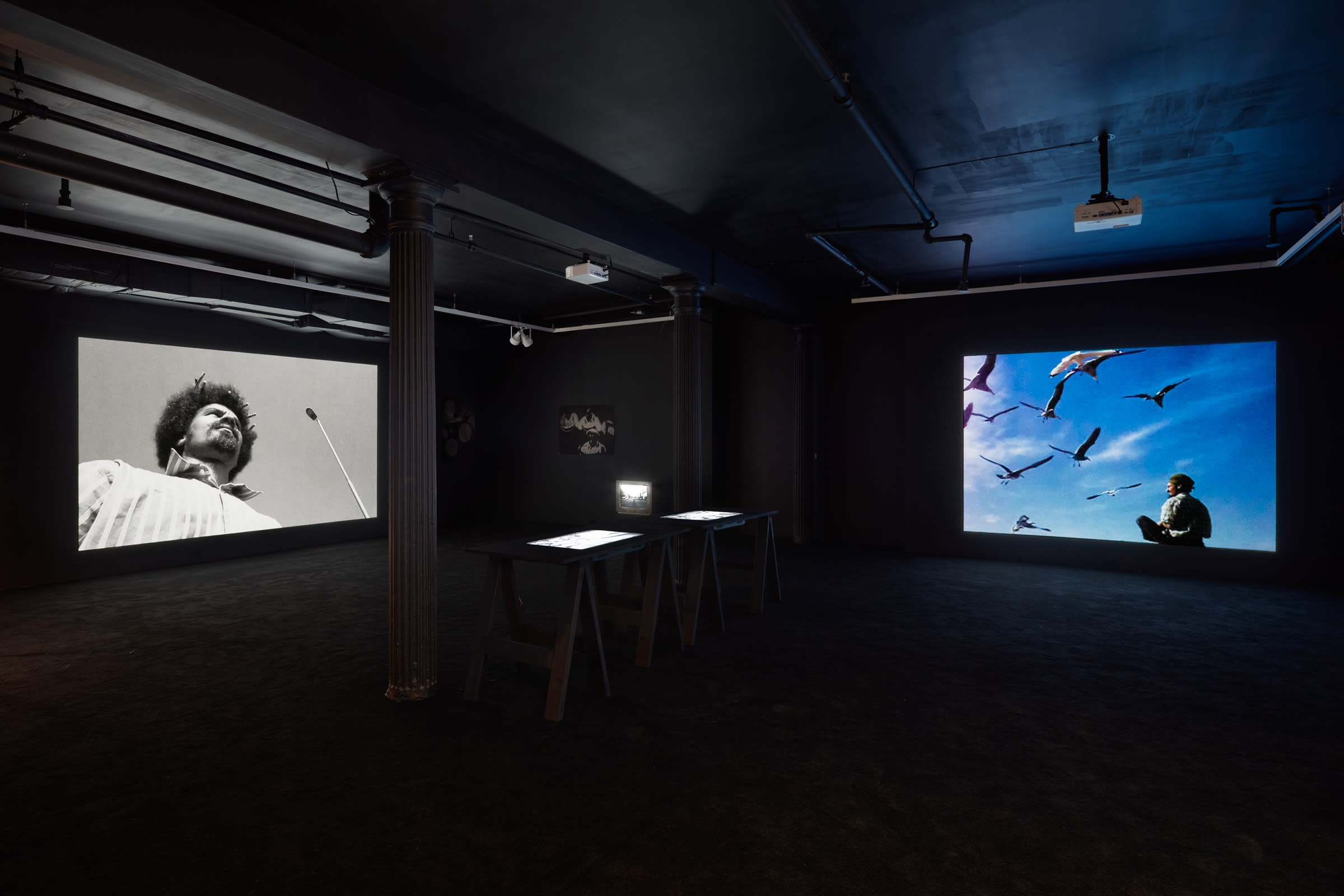
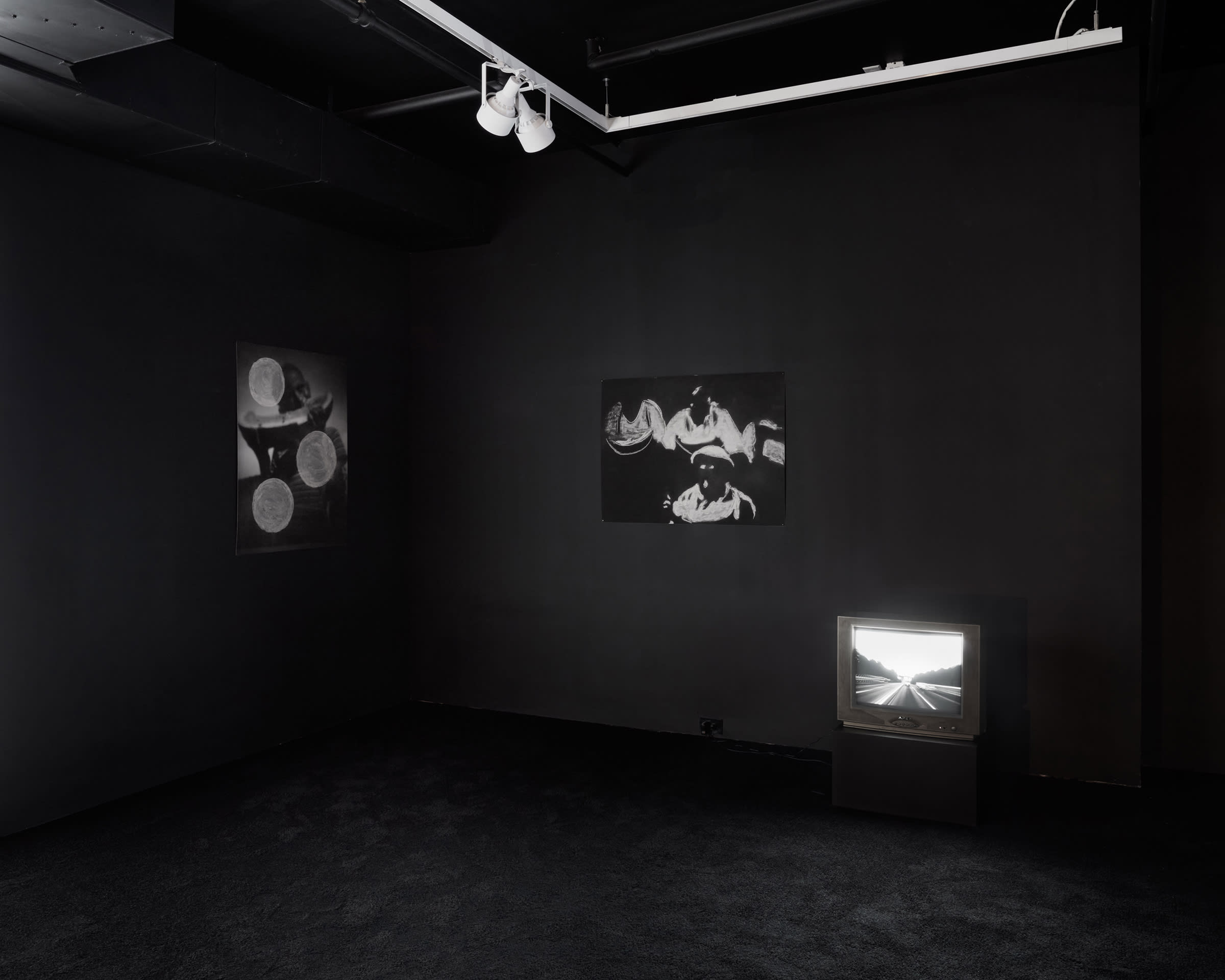
In many ways, the city of Miami – long the gateway between North and South Americas, with a correspondingly complex history – is an apt context in which to see the artist’s work. Nazareth’s exhaustive exploration of identity and its exploitation, of migration and the economy, of art and its monetization, seems even sharper here than elsewhere.
Oliver Basciano is a journalist and critic based in São Paulo and London.
Paulo Nazareth is represented by Mendes Wood DM (São Paulo, Brussels, New York); Galleria Franco Noero (Turin); Meyer Riegger (Berlin, Karlsruhe, Basel); and Stevenson (Cape Town, Johannesburg, Amsterdam). Paulo Nazareth also took part in The Artist as Slow Traveler during Art Basel Miami Beach's 2015 Conversations program.
Top image: Installation view of Paulo Nazareth's exhibition 'Nosotros los otros', Mendes Wood DM, New York. Courtesy of the artist and Mendes Wood DM, São Paulo, Brussels, New York. Copyright Paulo Nazareth.